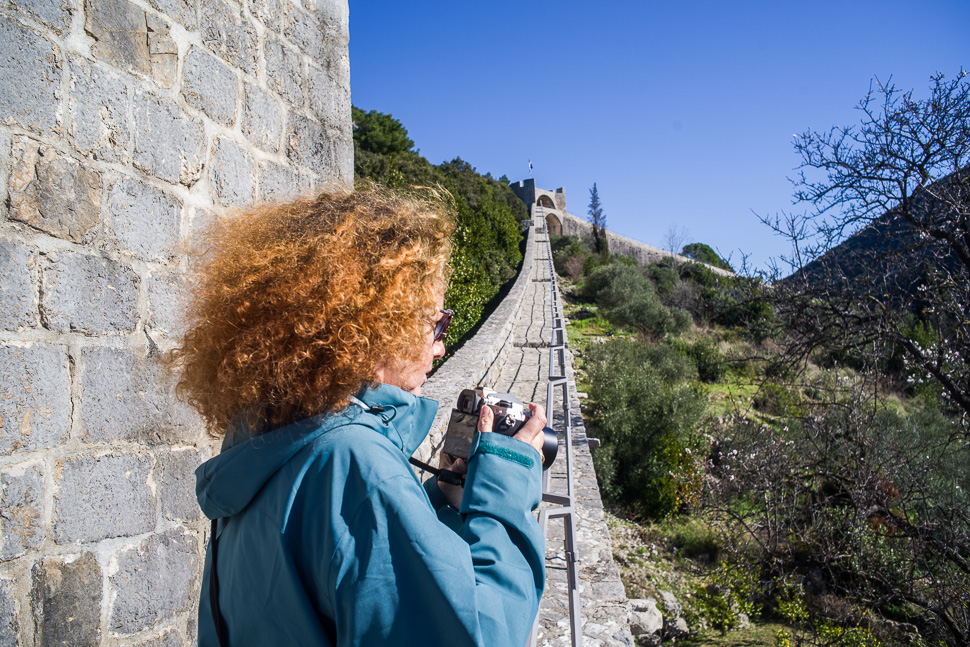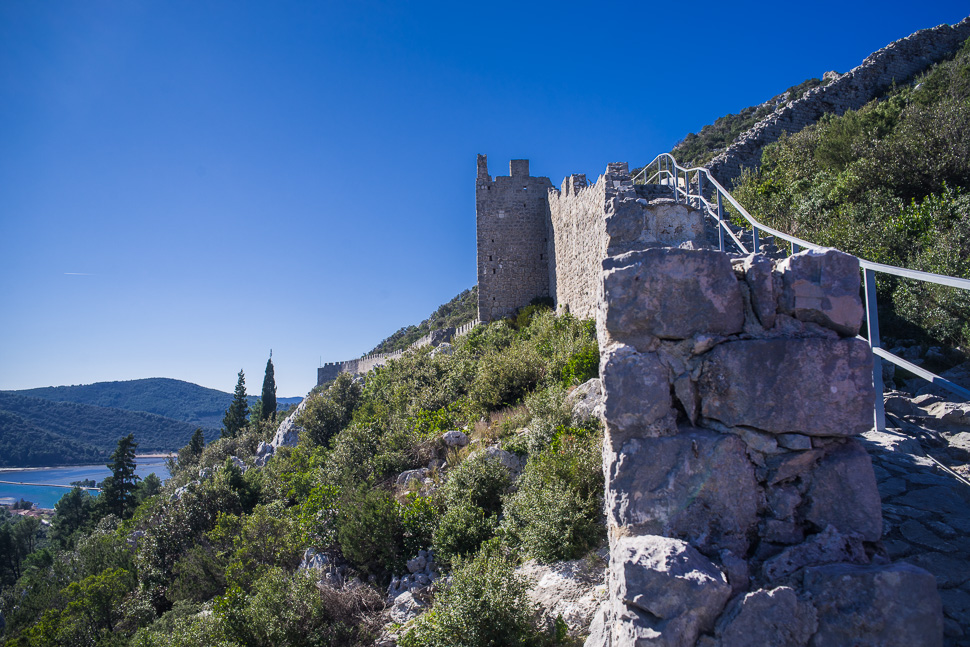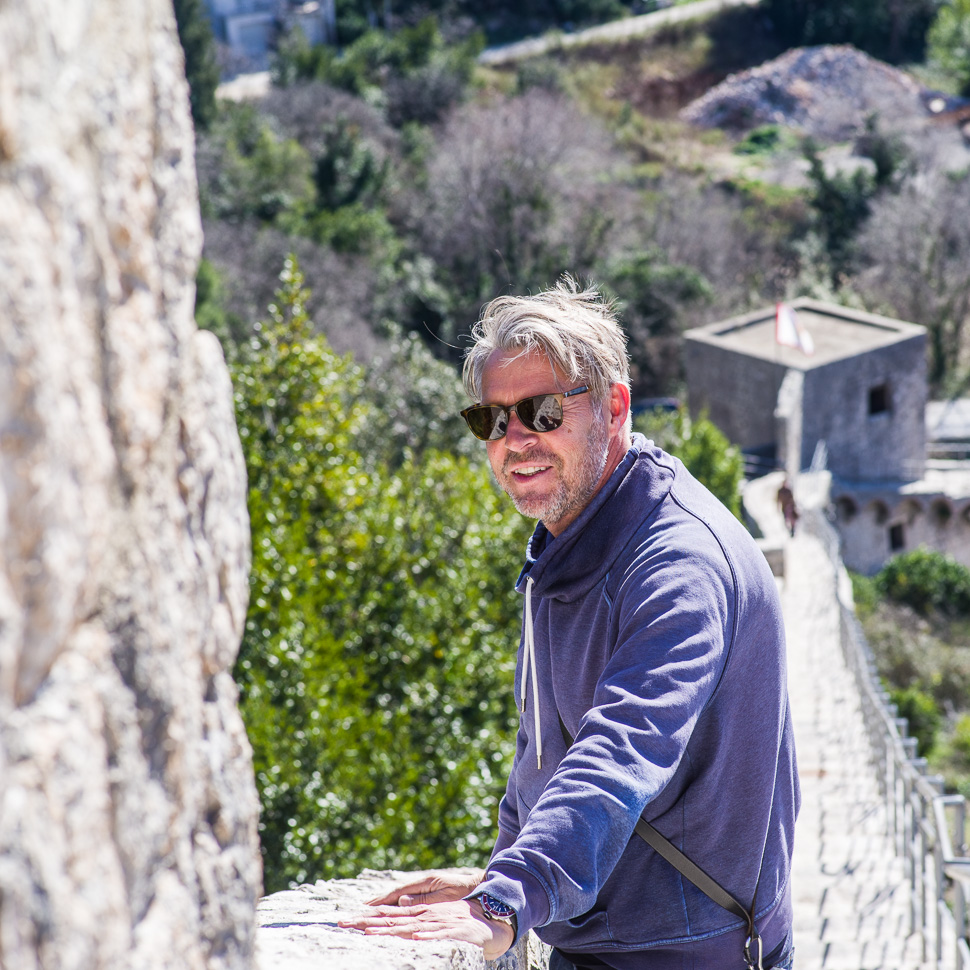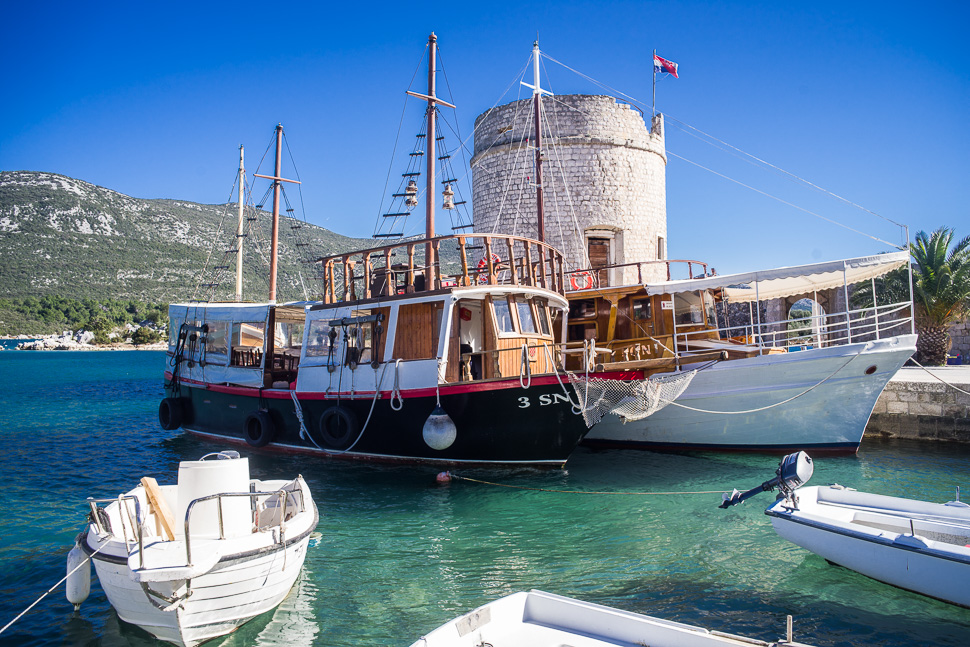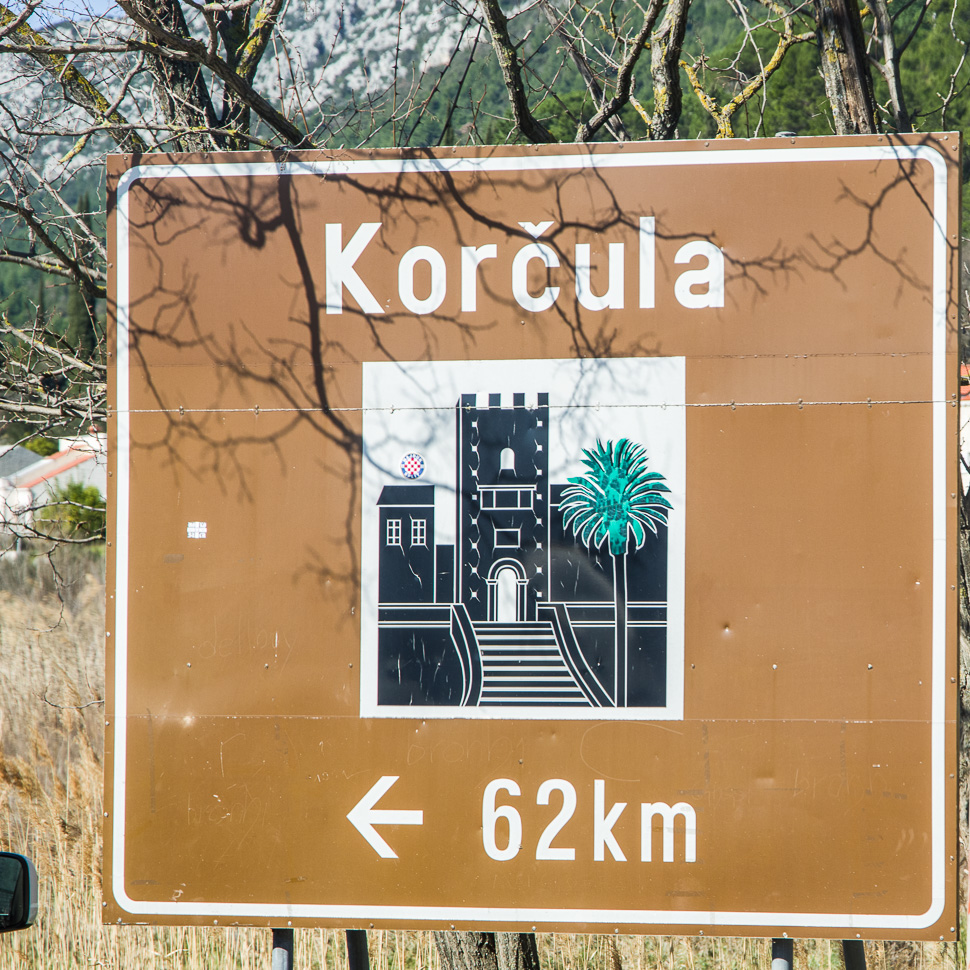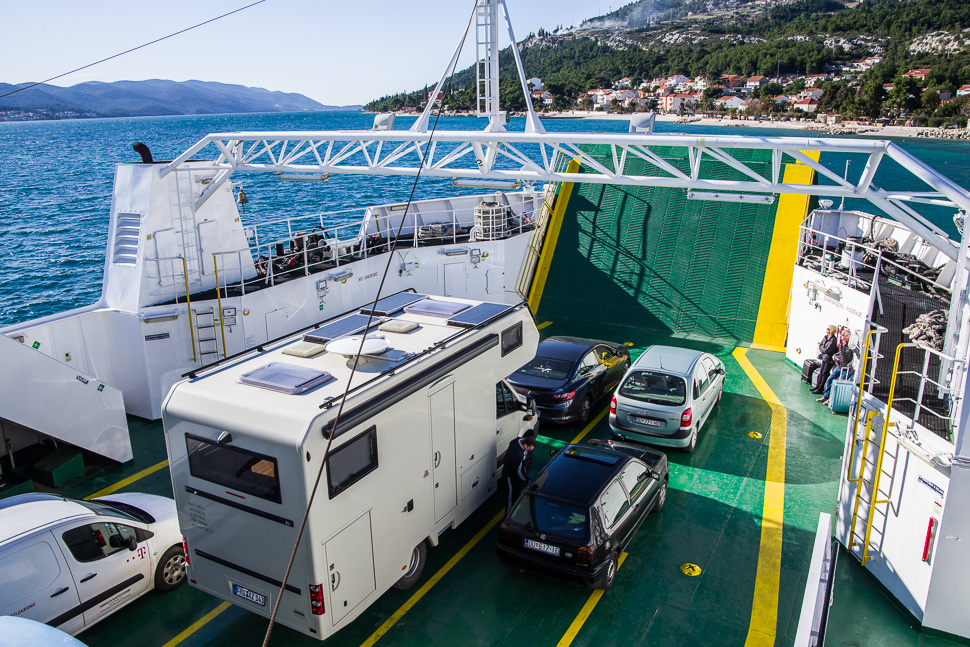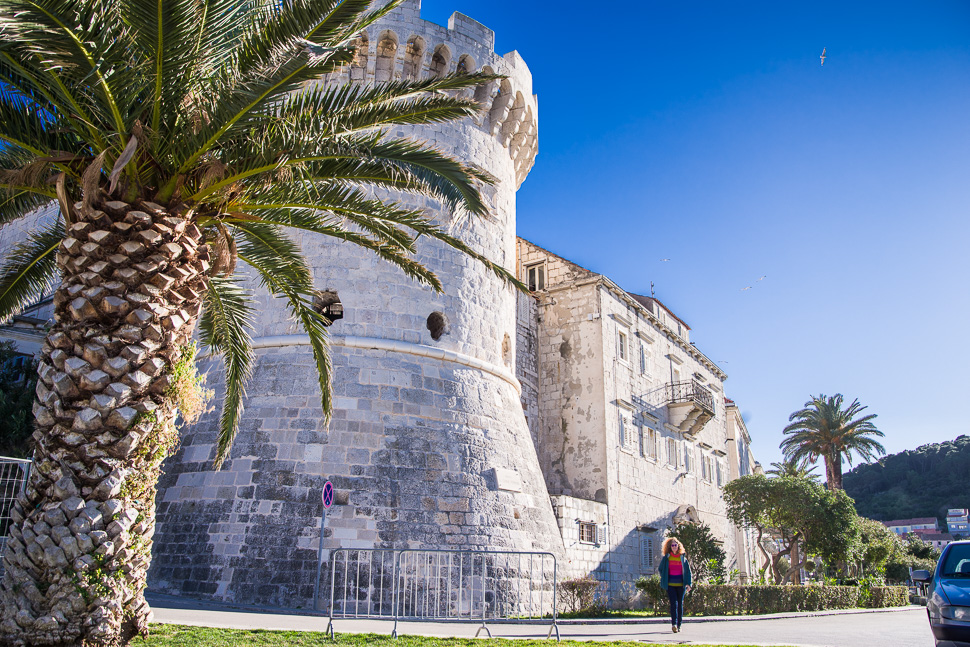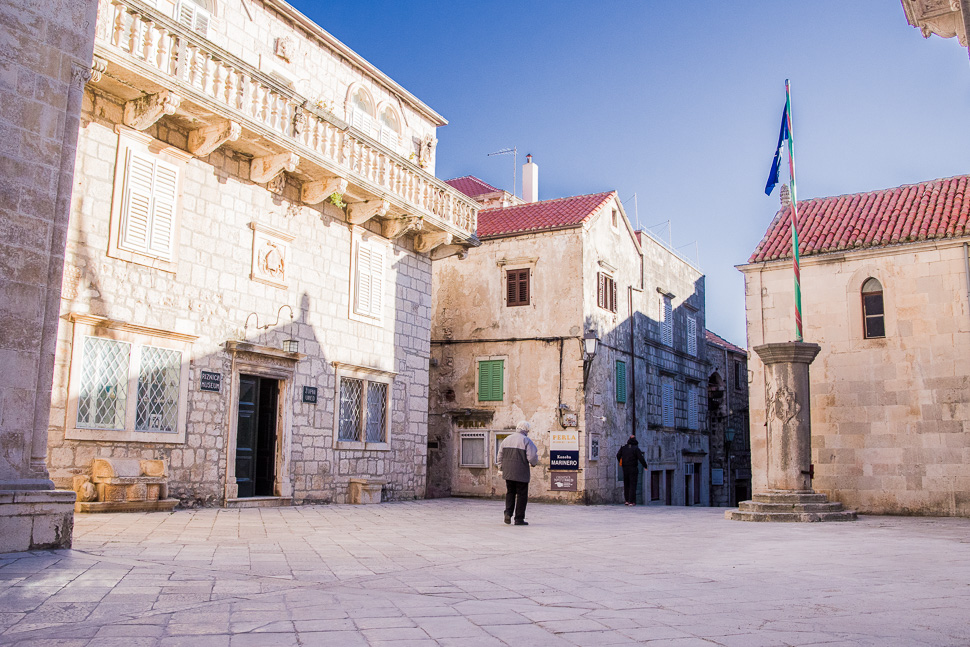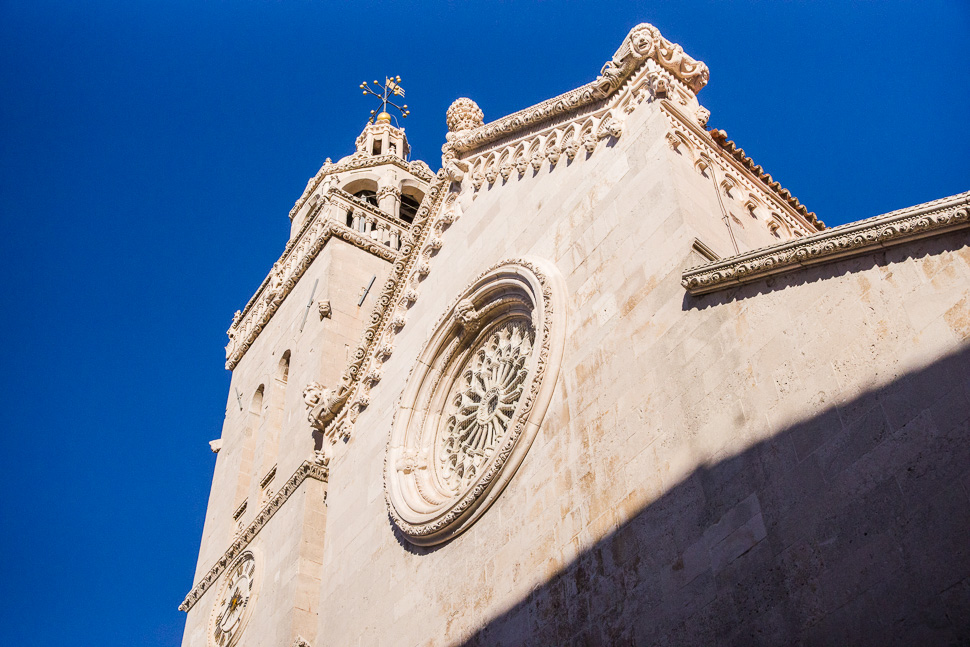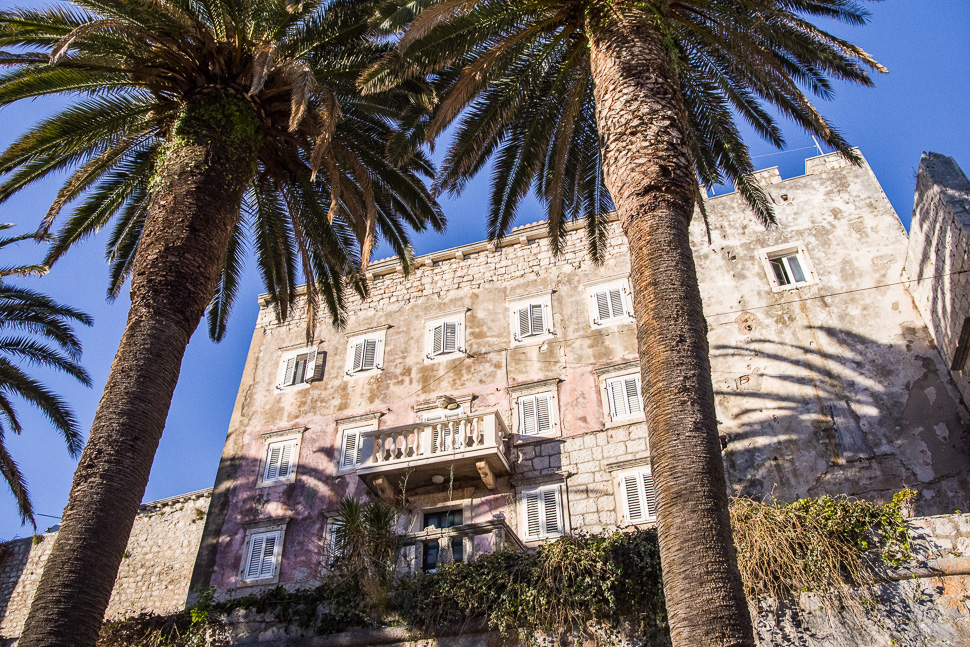On our way to Korčula we first came past Ston with its fascinating wall before we got to the ferry and after a short ride had reached the island. The Croatian islands with their small venetian towns decorated with big palm trees were a delight to explore.
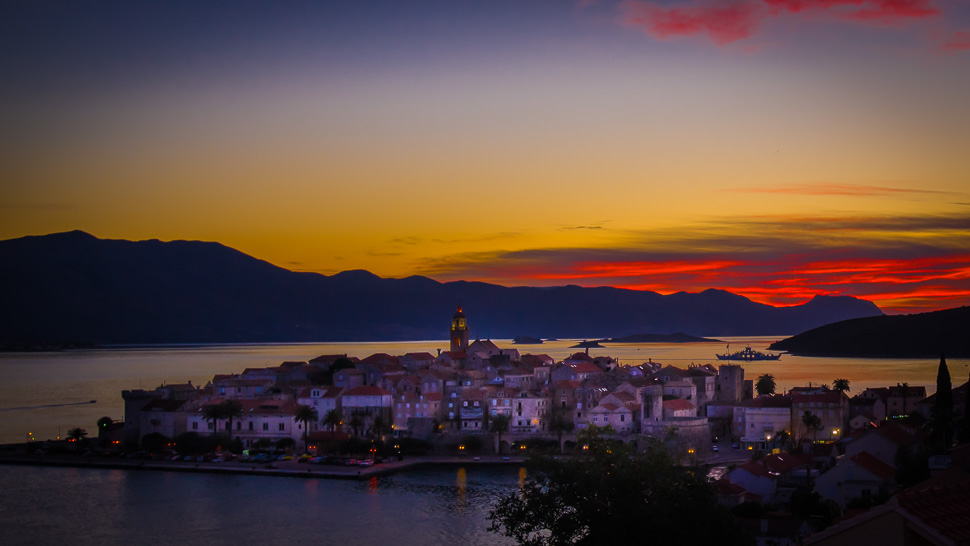 |
| Korčula at sunrise |
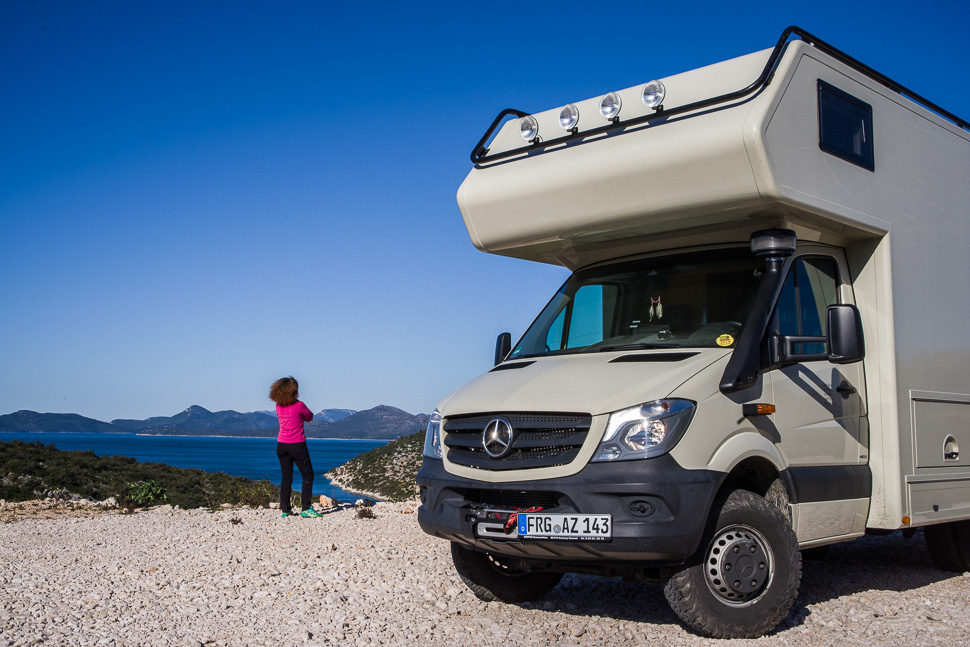 |
| Parking for the Night |
We had spent the night at a perfect spot overlooking the coast south of the peninsula of Pelješac (42.772048,17.881798). The next morning we went to visit the wall of Ston, a remarkable construction at the narrowest part of the peninsula.
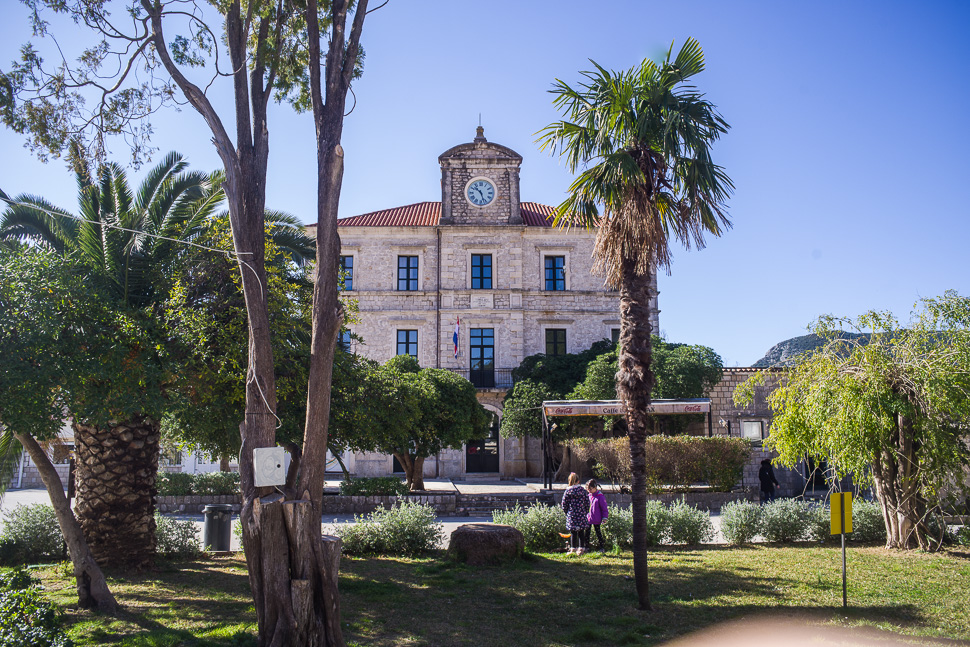 |
| Town hall in Ston |
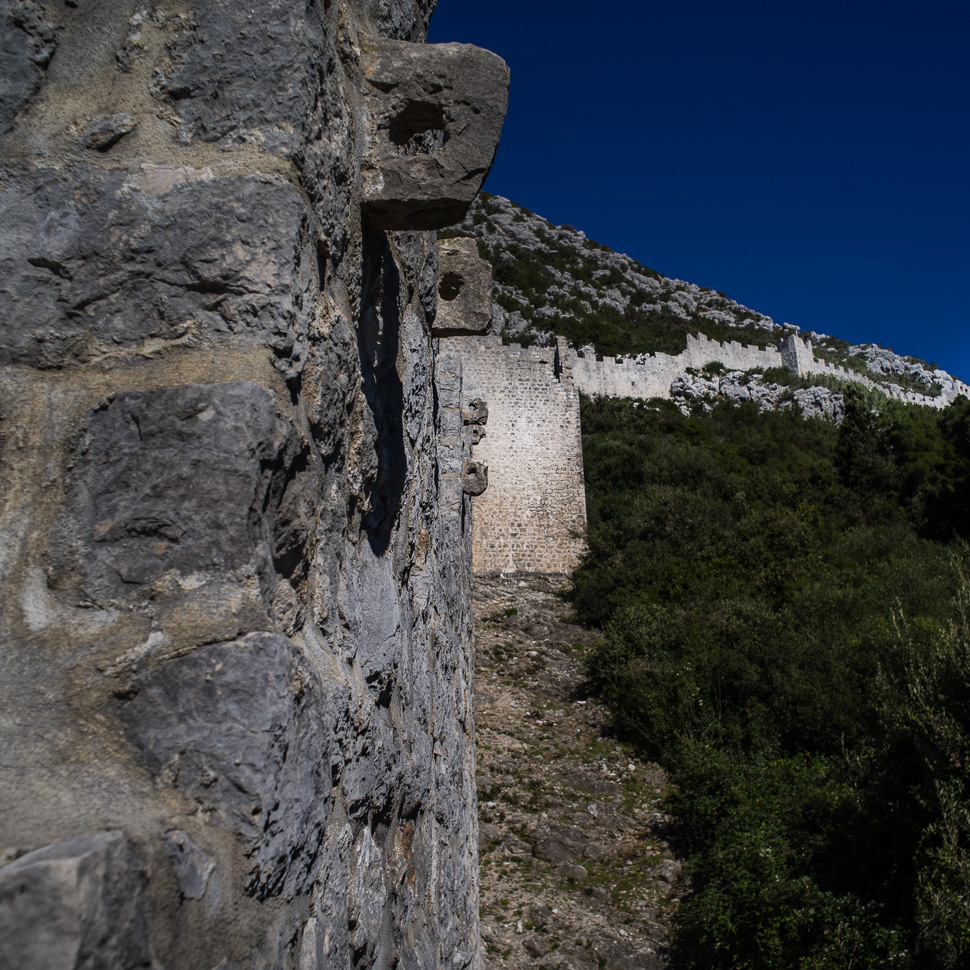 |
| Wall of Ston leading along the mountain |
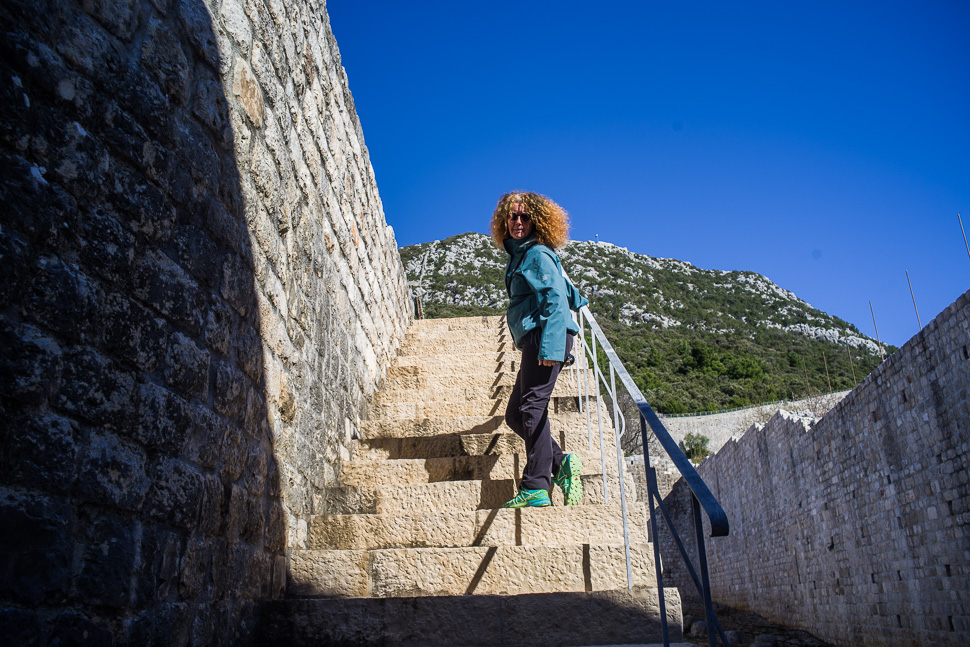 |
| Getting ready for the walk |
After the Republic of Dubrovnik had acquired Pelješac in 1334 one of the longest defense walls in Europe was erected on one side of the peninsula, to preserve the boundaries. The fortress of Ston was one of the largest construction projects of the time, with an original length of 7 km, consisting of the walls of Ston and Little Ston. The walls were of great importance because they were defending the saltworks, the shellfish farm and the city itself.
During a couple of earthquakes, the last ones in the 20th century, the wall was damaged, but had recently been restored and can be visited now by walking from one side to the other. Every year a marathon takes place at Ston where you will be running over the wall.
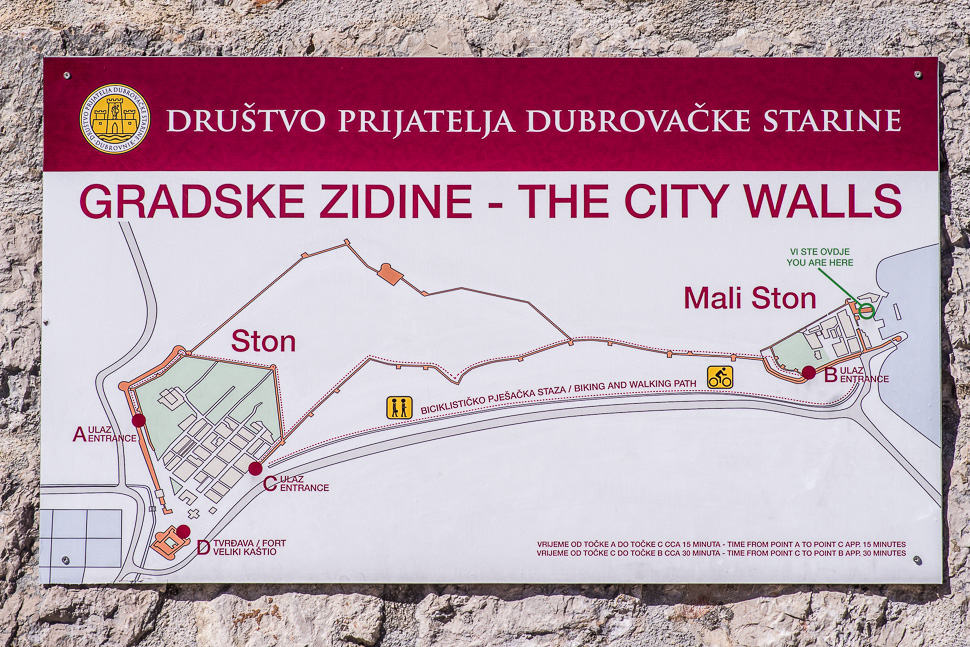 |
| Map of the wall leading from one side of the peninsula to the other one |
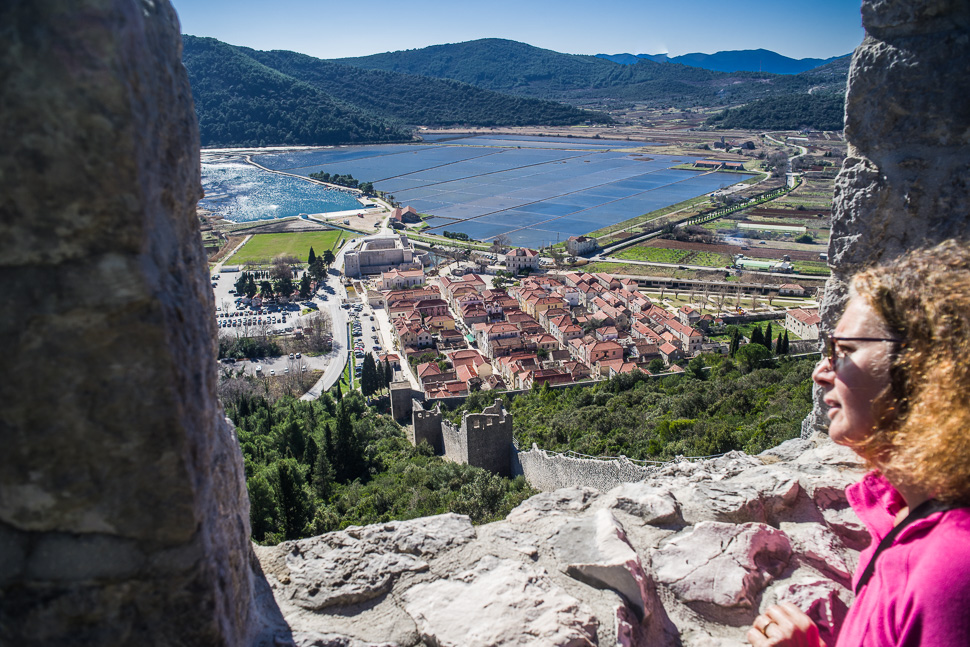 |
| The town of Ston with its salt pans |
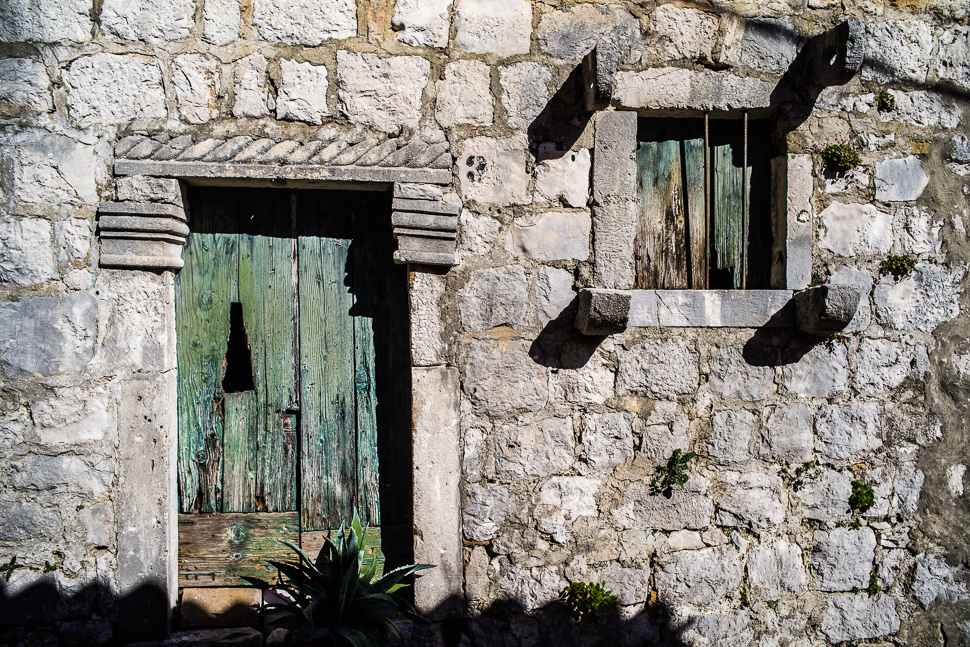 |
| picturesque Mali Ston |
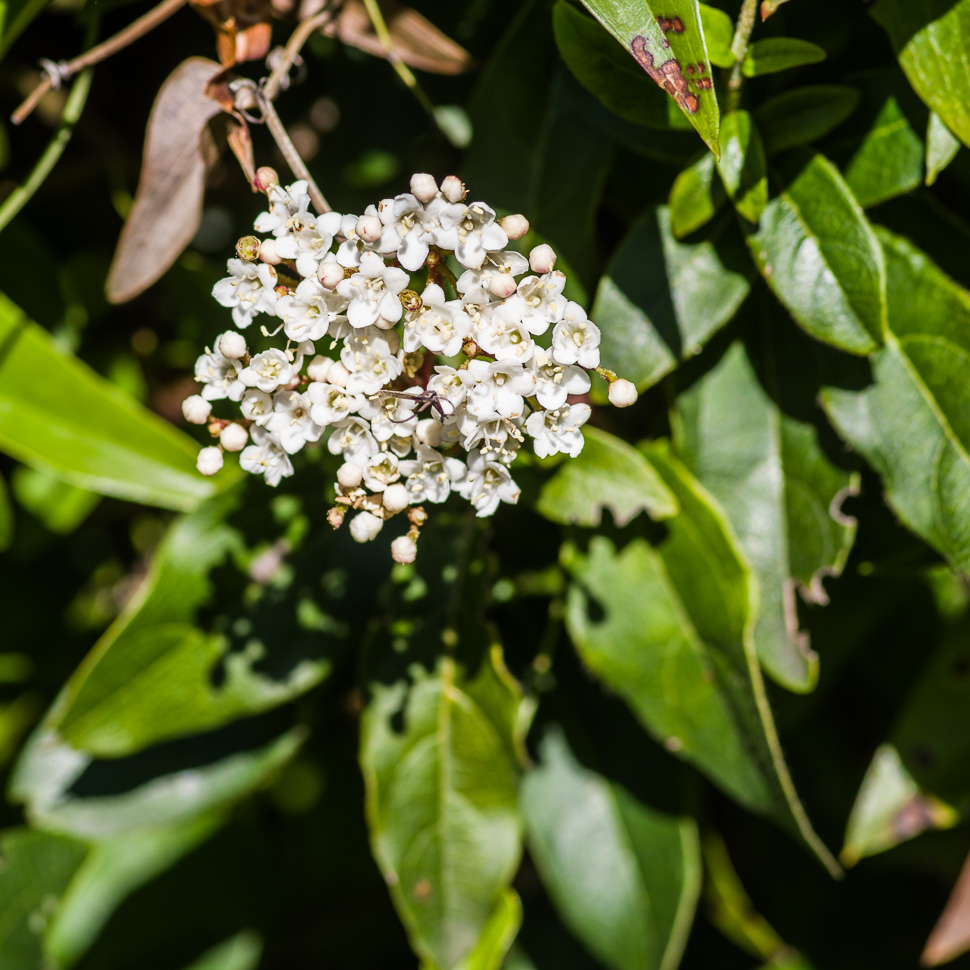 |
| Flower of the Day |
From Ston it was still a long drive to the other end of the peninsula of Pelješac where a ferry leaves to Korčula.
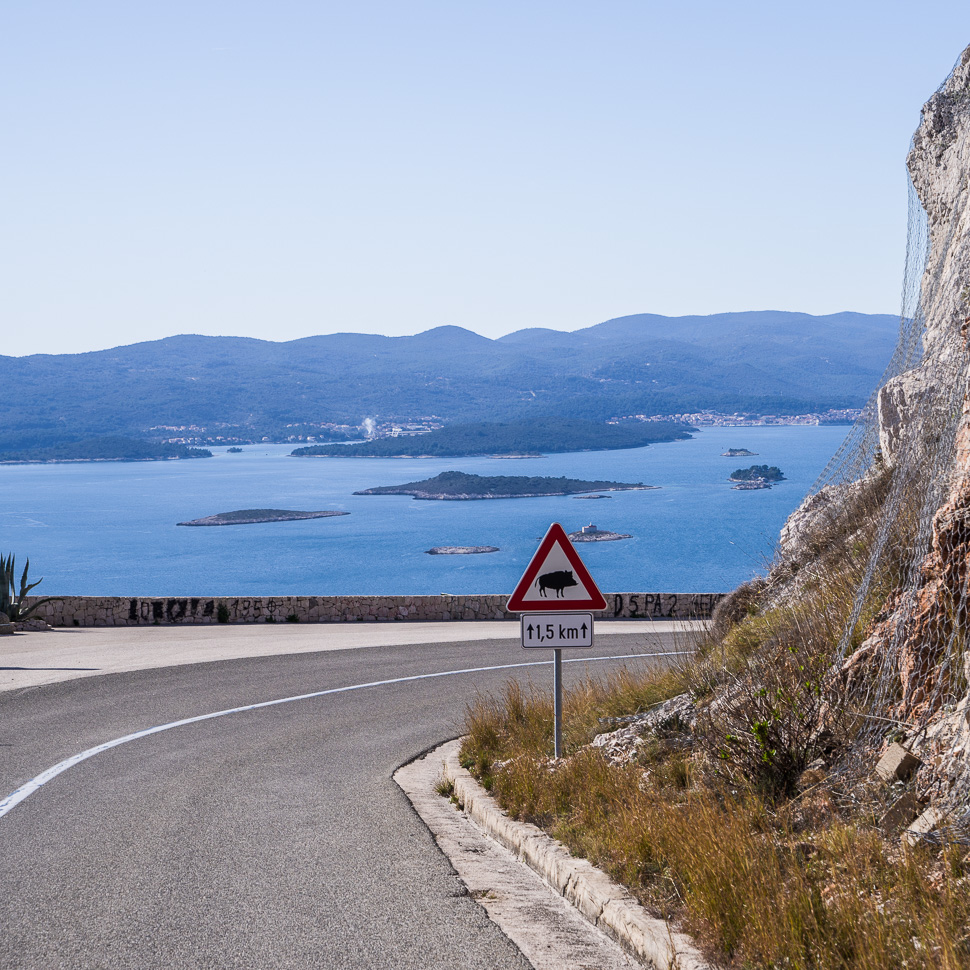 |
| Wild boar seems to be living on the coast and islands |
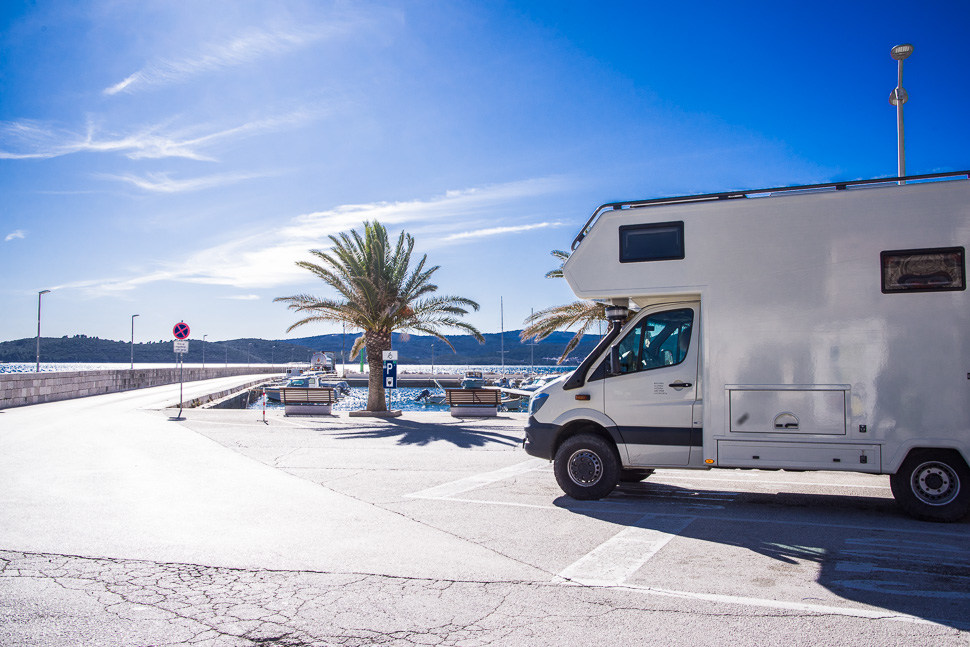 |
| Waiting for the ferry at Orebić |
 |
| Korčula from our parking for the night |
This city was shaped by Greeks, Romans, Illyrians, Croats and Venetians. In 1001 Korčula came under the rule of Venice for the first time. In 1298 there were fights between Venetians and Genoese in the waters outside the city. The Venetians with Marco Polo achieved full sovereignty over Korčula in this naval battle. Marco Polo became one of the most important residents, whose traces can still be seen in the 21st century.
Inside the strong city walls, the street were in a herringbone pattern, starting from the center around the San Marcus Cathedral. The clearly structured facility is a special feature in Europe. The main building material was stones from the island of Korčula. The Venetians remained sovereign over Korčula until the end of the Republic of Venice. Afterwards, Austrians, French, Russians and English conquered the city-state in succession.
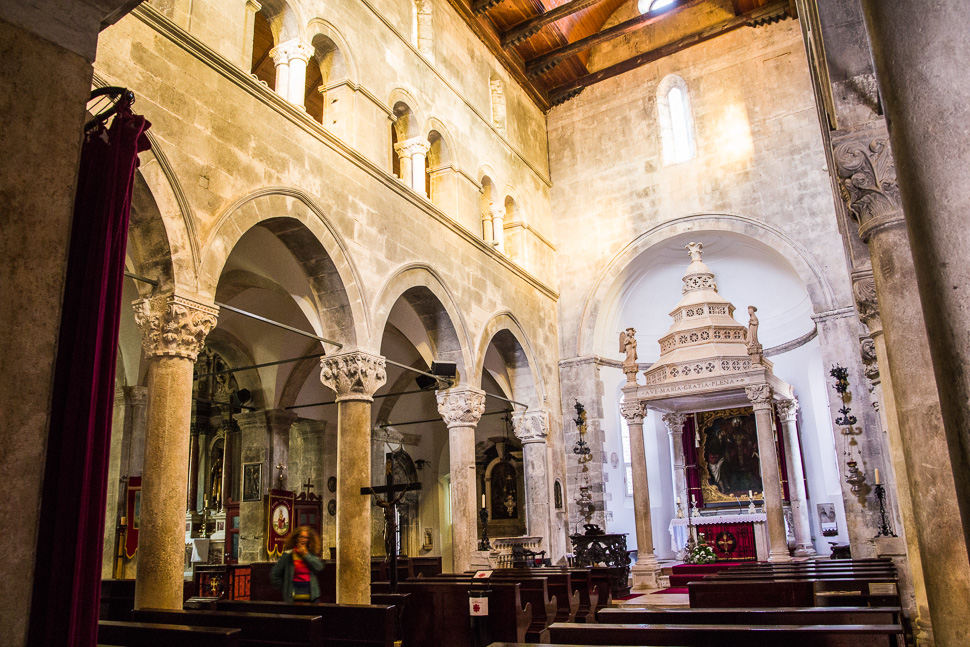 |
| San Marcus Cathedral |
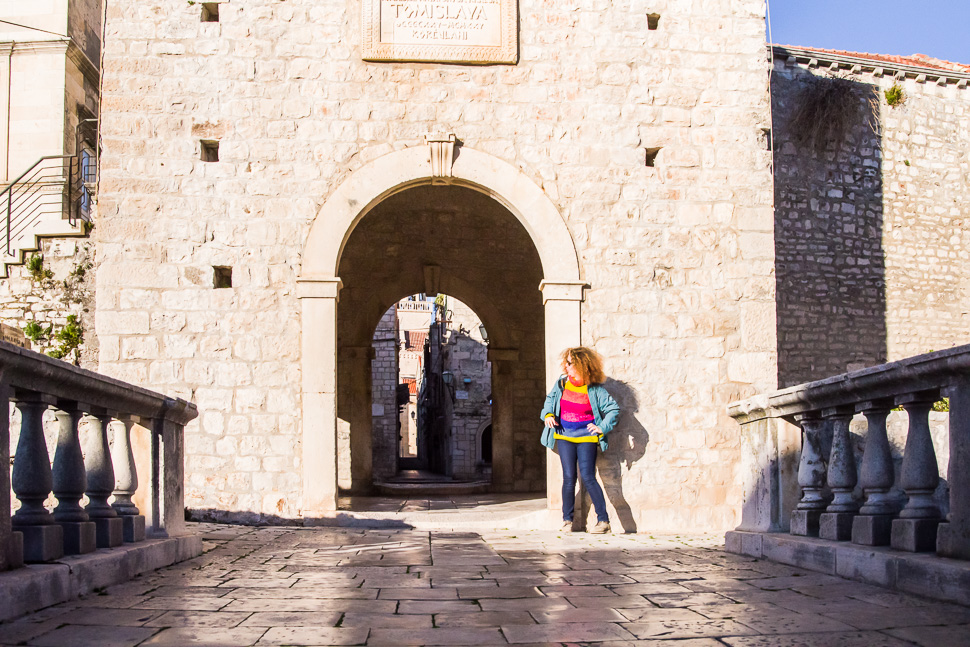 |
| City gate, which had a draw bridge in earlier times |
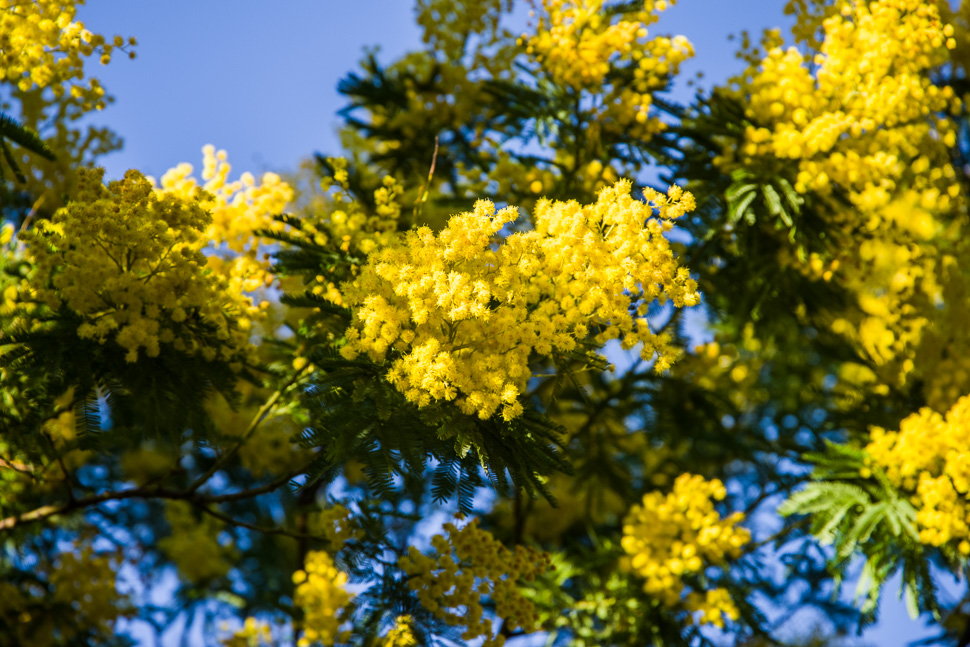 |
| Silver wattle |
We did 2 hikes at Korčula, the first one from Lumbarda which was not very memorable leading past a big waste dump and the other from Vela Luka, where we had spent our second night at Korčula.
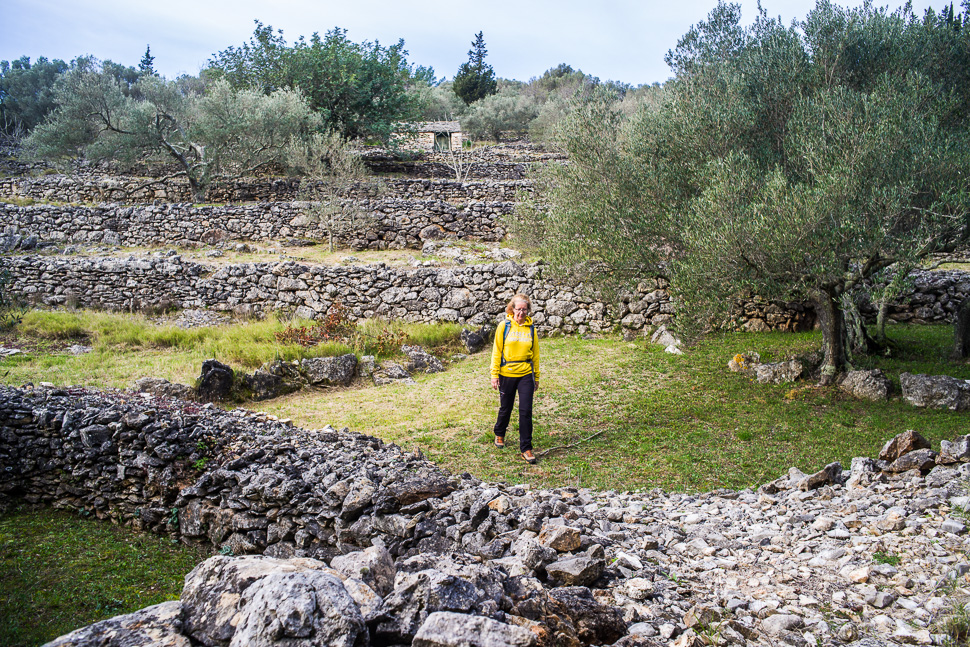 |
| Hiking around Vela Luka |
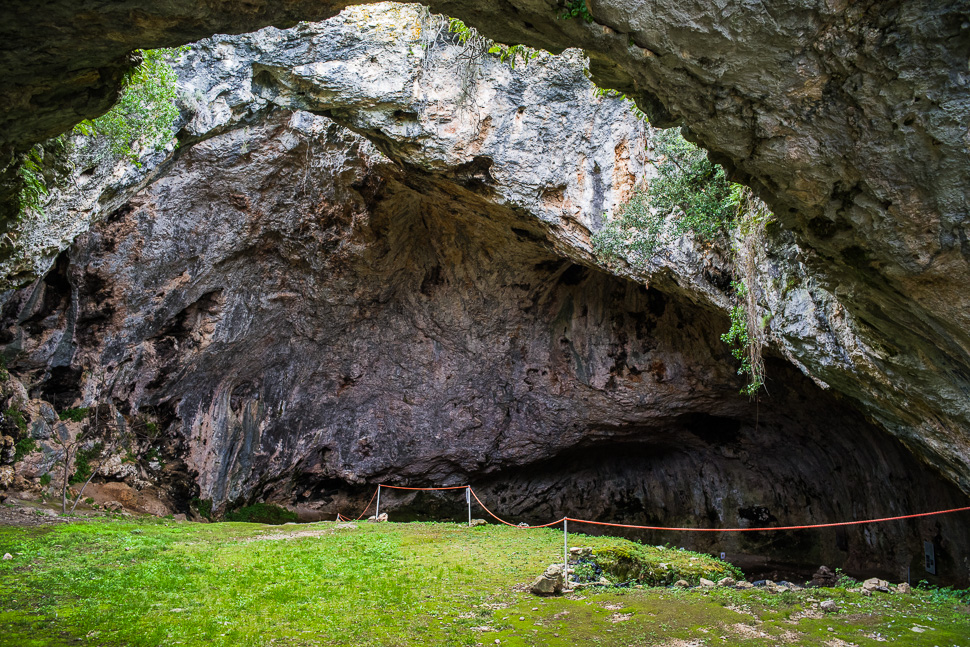 |
| Vela Spila |
On our route starting from Vela Luka we also reached a cave called Vela Spila which has been continuously populated since the early Stone Age around 20,000 BC, some finds indicating that even people from earlier periods were present. The archeologists are still digging but the site was closed when we came past.
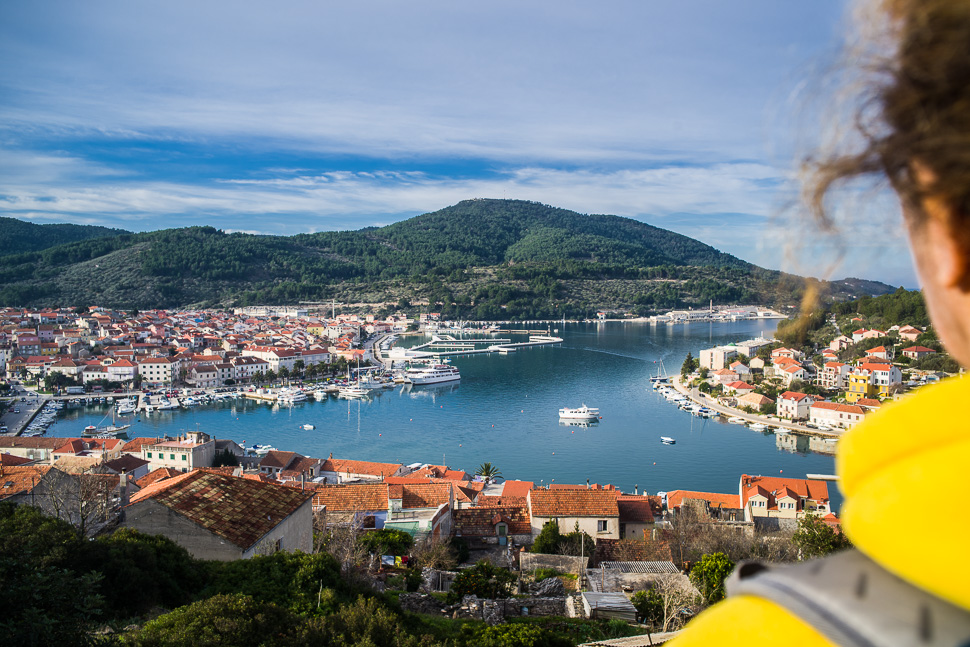 |
| Vela Luka |
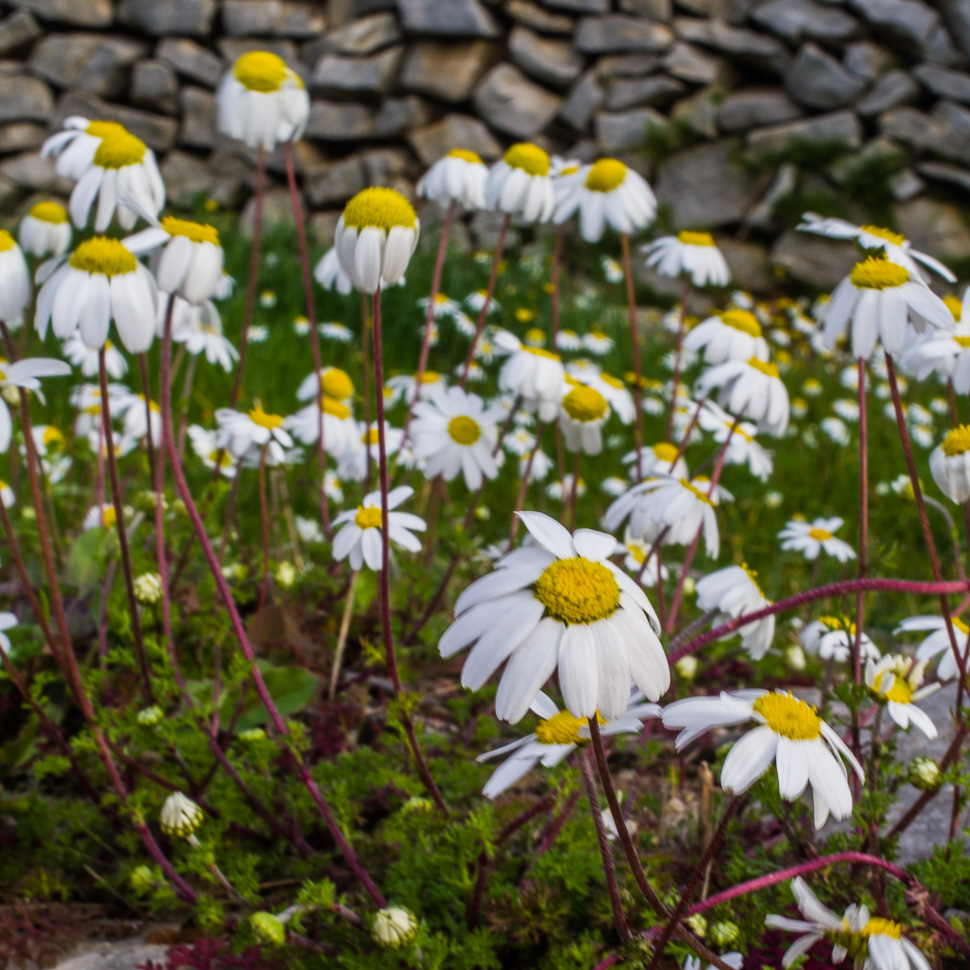 |
| Flower of the Day |
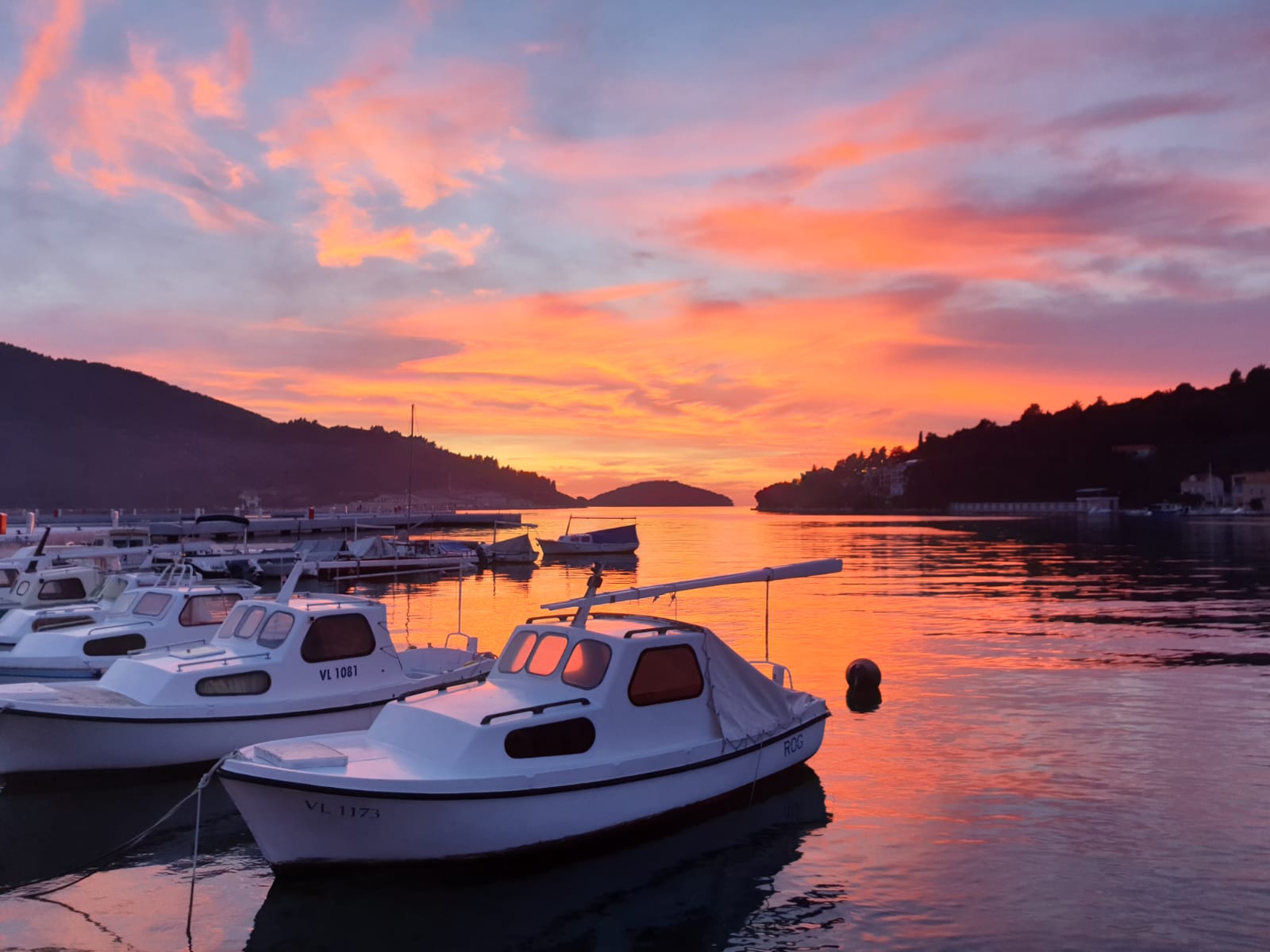 |
| Very nice sunset @Vela Luka |





